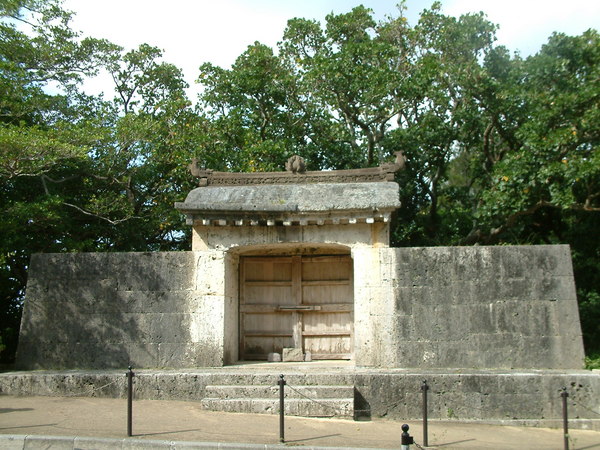Sonohyan Utaki
Historic sitesHistory


Sonohyan Utaki is a place of worship for the Ryukyu royal government, located between the Kankai-mon Gate and Shurei-mon Gate at Shuri Castle, along the way. Utaki means “shrine”.
Basic information
- Address
- 903-0816 1-7 Mawashi Shuri Naha Okinawa Okinawa churashima foundation Shurijo Castle Park Management Center
- TEL
- 098-886-2020 Okinawa churashima foundation Shurijo Castle Park Management Center
- Business hours
- Nothing in particular
- Close day
- Nothing in particular
- Charge
- Free
- Parking
- Paid parking is available.
- Access information
- Take the "Yui Rail" from Naha Airport. Get off at Shuri Station. A 10-minute walk away. Take the city bus line number (1, 17), or the outside city bus line number 46, and get off at the Shurijo Kouen Iriguchi bus stop. About a 5-minute walk to the Shurei-mon gate.
Take the Shurijo Shitamachi number 8 bus line and get off at the Shurjo-mae bus stop, about a 1-minute walk to the front of the Shurei-mon gate.
Take the number 9, or number 25 city bus line, and get off at the Yamakawa bus stop. About a 15-minute walk to the Shurei-mon gate.
Additional Information
- Academic information
- Cultural property(Prefectural designated historical site)
Designated date: November 29, 1955
Sonohyan-utaki is a place of worship for the Ryukyu royal government, located between the Kankai-mon Gate and Shurei-mon Gate at Shuri Castle, along the way. Utaki means “shrine.” The front stone gate functioned as an offering hall, and the whole grove in the back of the stone gate is a model of the god. This style is the older style before it was developed into the present shrine style, which has an offering hall and a main shrine. On the plaque at the front stone gate it says, “In the reign of King Sho Shin, this stone gate was constructed on November 28, 1519.”
The stone gate was constructed by Nishito from Taketomi Island, Yaedake. The gate shows a board-thatched roof in the karahafu style, has eaves protruding in a rafter shape, has an accessory panel called kegyo on the gable, has a carving of scrolling arabesque design on a big ridge, has an flaming jewel at the center of the ridge with Onigawara on both ends, and is decorated with ornamental tiles called shibi. This is a unique example of masonry in Okinawa with the adoption of both styles of Japan and China. It was designated as a national treasure in 1933, but destroyed during the Battle of Okinawa in 1945. After that, the grove behind the stone gate was cut out and changed a lot. In 1957, the stone gate was reconstructed with the use of travertine. But in 1978, the stone gate displayed cracks. In 1982, the whole gate was demolished for repair work, using Ryukyu limestone just like the original one, reused old materials from the original on and placed it in the same position, and completed in March, 1986. - Quote
- Naha Board of Education Cultural Heritage Division (2007) "Naha cultural property" Naha Board of Education
